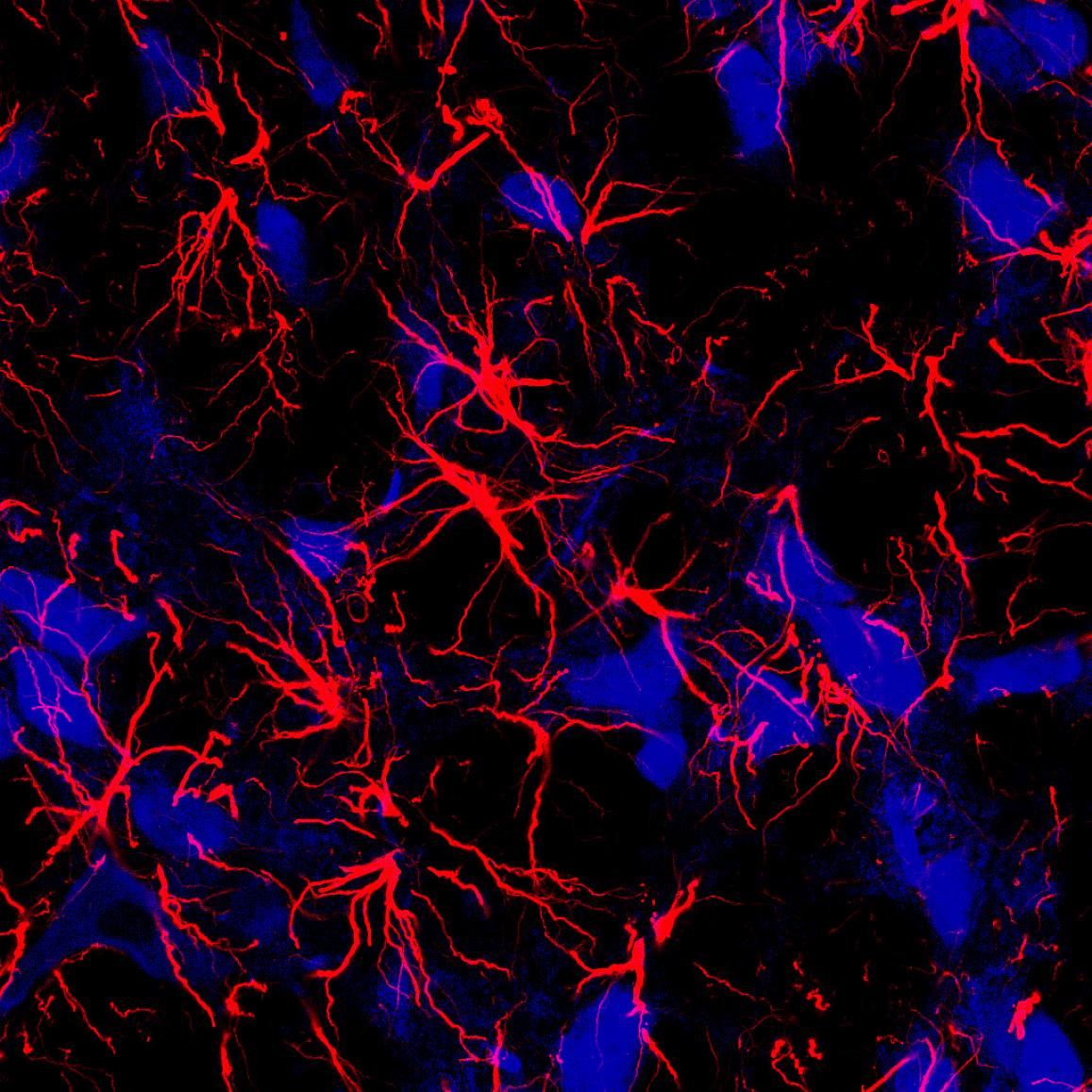Star-like cells may help the brain tune breathing rhythms
NIH study in rats suggests that support cells modulate brain circuit activity
Traditionally, scientists thought that star-shaped brain cells called astrocytes were steady, quiet supporters of their talkative, wire-like neighbors, called neurons. Now, an NIH study suggests that astrocytes may also have their say. It showed that silencing astrocytes in the brain’s breathing center caused rats to breathe at a lower rate and tire out on a treadmill earlier than normal. These were just two examples of changes in breathing caused by manipulating the way astrocytes communicate with neighboring cells.
“For decades we thought that breathing was exclusively controlled by neurons in the brain. Our results suggest that astrocytes actively help control the rhythm of breathing,” said Jeffrey C. Smith, Ph.D., senior investigator at the NIH’s National Institute of Neurological Disorders and Stroke (NINDS) and a senior author of the study published in Nature Communications. “These results add to the growing body of evidence that is changing the way we think about astrocytes and how the brain works.”

A fresh look at the brain and breathing: NIH study in rats shows that star-shaped brain cells, called astrocytes (red), may play an active role in breathing.
This page was last updated on Friday, January 21, 2022